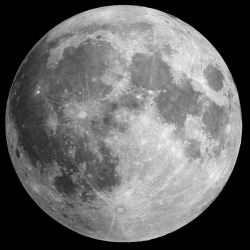
One of the Moon’s biggest craters was created by an asteroid more than 250km across, a study suggests. It smashed into the lunar surface 3.8 billion years ago, forming Mare Imbrium – known as the right eye of the "Man in the Moon". Scientists say the asteroid was 3 times bigger than previously estimated and debris from the collision would have rained down to Earth.
The asteroid was so big it could be classified as a protoplanet – a space rock with the potential to become a fully formed world. Lead author Prof Peter Schultz, a planetary geologist from Brown University in the United States, said: "One implication of this work is that the asteroids may not have been these small chunks flying around – there may have been many more of these very large protoplanets.
"It would have been a catastrophic period of time." The Imbrium crater measures more than 1,200km (750 miles) across. Until now, scientists used computer models to estimate the size of the asteroid that led to its formation. But for in a new assessment of the collision, Prof Schultz recreated the smash in the lab.
Using a three-storey-high, hyper-velocity gun, the researchers fired small spheres of metal travelling at more than 22,000km per hour (13,000 mph) into a curved aluminium plate.
"We film it with high-speed cameras: things that go up to one million frames a second," Prof Schultz told BBC World Service’s Science in Action programme. By analysing the slowed-down footage and the pattern of debris, the researchers were able to calculate the size of the asteroid that crashed into the Moon.
"We know there were big asteroids, but we have increased the size significantly," explained Prof Schultz. "The previous estimate for the Imbrium asteroid was in the order of 80km, and we’ve increased that by a factor of three."
The researchers say it would have been travelling at more than 70,000km per hour (40,000mph), hitting the lunar surface at an angle of about 30 degrees.
The colossal high-speed impact not only left a giant dent in the near-side of the Moon, it also would have sent billions of tonnes of debris hurtling towards the Earth. Prof Schultz explained: "At that time, the Moon would have been much closer (to the Earth), only half of its present distance, if even that.
"So anything coming off the Moon would have covered us in lunar debris." But in this period of the Solar System’s turbulent history – aptly known as the Late Heavy Bombardment – asteroid collisions would have been commonplace.
"This was a time when Jupiter and Saturn were changing their position in the Solar System," said Prof Schultz,
"And as a result it stirred the pot, so to speak. It sent asteroids between Jupiter and Mars into chaos – and they sent material into the inner Solar System, colliding into the inner planets.
"And what this study says is some of these asteroids were humungous." The researchers now plan to use the same method re-analyse other huge craters scattered across the Solar System. They believe we may have under-estimated just how cataclysmic these past bombardments were.
